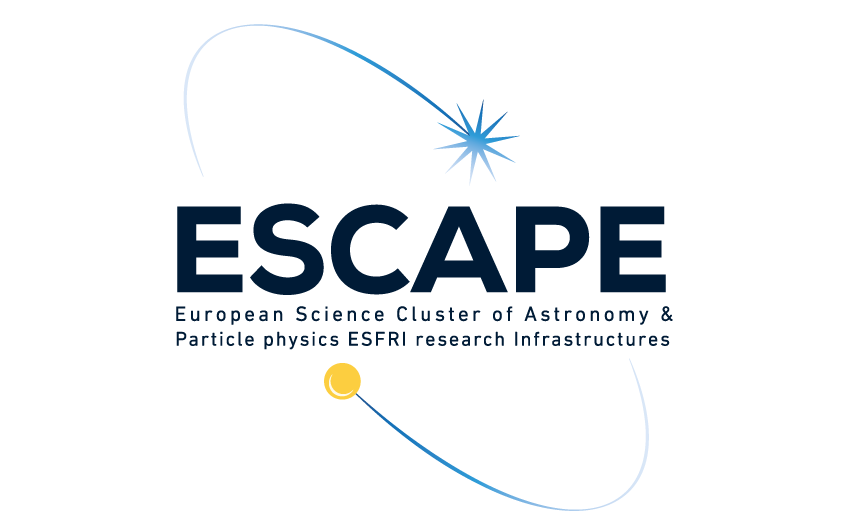

31 May 2021
Project
The CNRS LAPP (Laboratoire d'Annecy de Physique des Particules) is opening two postdoctoral researcher positions in the CTA group in the context of the ESCAPE scientific consortium and EOSC-FUTURE Science Projects, which aims to bring together on a common science platform, new scientific findings as well as the data and analysis software of a number of major world-class projects in particle and astroparticle physics.
Within ESCAPE two large “Test Science Projects” (TSP) will be deployed to demonstrate new cutting-edge science capabilities, in particular those involving cross experiment collaboration and science outcomes and to validate on behalf of the science communities, the open-science solutions developed within ESCAPE:
- Dark Matter: to bring together on a common science platform, the data and analysis software of collider, direct and indirect detection experiments involved in ESCAPE;
- Extreme Universe: to implement a sustainable platform for multi-messenger astronomy, to enable the use of probes from telescopes and detectors from across the spectrum, and including Gravitational Waves, neutrinos, and cosmic rays.
Dark Matter postdoctoral offer:
The successful candidate will work mostly on dark matter indirect detection through very high-energy gamma rays with a special focus on future perspectives for the Cherenkov Telescope Array (CTA). Theoretical predictions, phenomenological sensitivity studies, and, possibly, direct analysis of early science data are expected to be performed by the postdoc, extending already existing open source software of broad use within CTA such as Gammapy and Ctools. Synergies with future optical surveys, such as the LSST/Vera Rubin Observatory, will also be explored. Combination of these results with searches for Dark Matter candidates at collider experiments and/or direct detection is also envisioned.
- Implement flagship DM analyses in CTA and commit in open-science reproducible analysis results and pipeline.
- Produce constraints on DM models that can be compared to other experiments
- Contribute to porting suite of datasets (including phenomenological studies), simulation software packages and CTA analysis tools into the ESCAPE Data lake and Software catalogue services for open science.
Technical knowledge:
- Programming: python, C++
- Experience with data analysis in astroparticle physics
- Expertise in dark matter phenomenology and gamma-ray analysis tools is recommended.
- Fluent in English, speaking and writing
- Basic knowledge of French could be useful
Relationship skills:
- Creativity, autonomy, rigorous work
- Good interpersonal and communication skills
- Excellent writing, speaking and presentation skills in English
- Good team work skills, as the candidate will be working within a team of postdocs from different experiments who are also implementing new analysis pipelines
Desired educational level: PhD
Desired work experience: 0-7 years after PhD
Extreme Universe postdoctoral offer:
The successful candidate will work mostly on two main high-energy astrophysics class of objects Gamma-Ray Burst (GRB) and Active Galactic Nuclei (AGN) through very high-energy gamma rays with a special focus on future perspectives for the Cherenkov Telescope Array (CTA). Theoretical predictions, phenomenological sensitivity studies, and, possibly, direct analysis of early science data are expected to be performed by the postdoc, extending already existing open source software of broad use within CTA such as Gammapy and Ctools. Synergies with current Fermi public data analysis for AGN population studies as well as current and future multiwavelength data-sets and alerts for GRBs monitoring and data analyses will also be explored. Combination of these results with multi-messenger searches including gravitational waves and neutrinos is also envisioned.
- Implement flagship GRB and AGN analyses in CTA and commit in open-science reproducible analysis results and pipeline.
- Produce constraints on population studies and GRBs phenomenology through multi-messenger analysis and models.
- Contribute to porting suite of datasets (including phenomenological studies), simulation software packages and CTA analysis tools into the ESCAPE Data lake and Software catalogue services for open science.
Technical knowledge:
- Programming: python, C++
- Experience with data analysis in astroparticle physics
- Expertise in high-energy astrophysics phenomenology and gamma-ray analysis tools is recommended.
- Fluent in English, speaking and writing
- Basic knowledge of French could be useful
Relationship skills:
- Creativity, autonomy, rigorous work
- Good interpersonal and communication skills
- Excellent writing, speaking and presentation skills in English
- Good team work skills, as the candidate will be working within a team of postdocs from different DM experiments who are also implementing new analysis pipelines
Desired educational level: PhD
Desired work experience: 0-7 years after PhD
Context
The ESCAPE project is building a virtual research environment (VRE) for the Astronomy, Astro-Particle, Particle, and Nuclear Physics communities, as a prototype of the European Open Science Cloud (EOSC). It is intended that the developments of tools and services made in ESCAPE will become part of the EOSC implementation. The mechanism for that integration will be the EOSC-Future project, within which the 5 domain science cluster projects (including ESCAPE) will be the science drivers. A number of post-doctoral positions are available to work on these challenges in the ESCAPE partner institutes.
Working environment
This project will be done at LAPP in Annecy, in strong cooperation with theoretical physics laboratory LAPTh (hosted in the same premises) and within the CTA international consortium. Periods of exchange for knowledge transfer as well as other ESCAPE and EOSC-FUTURE project partners are foreseen.
LAPP is a laboratory of the National Institut of Particle and Nuclear Physics (IN2P3), an institute of the Centre National de la Recherche Scientifique (CNRS) which coordinates programmes in these fields. LAPP is a joint research unit (UMR 5814) of the CNRS and the University Savoie Mont-Blanc (USMB). More than 150 researchers, engineers, technicians, administrative staff, students and foreign visitors work there. The research carried out at the LAPP is aimed at studying the physics of elementary particles and their fundamental interactions, as well as exploring their links with the large structures of the Universe. LAPP is very actively involved in several large international collaborations working on accelerators (ATLAS, LHCb, FCC), neutrino detectors (DUNE, Stereo, SuperNEMO) and astroparticle experiments (Virgo, HESS, CTA and LSST). Involved in many R&D and construction programmes for large research infrastructures, the laboratory’s skills cover a large scope of domains involving innovative technologies in micro-electronics, complex mechanical structure design and optimization, grid computing and scientific software developments. LAPP hosts the MUST mid-range data storage and computing centre - widely open to distributed computing infrastructure supporting research and academic projects.
Duration of the contract:
The duration of the contract is 24 months. Salary is based on the experience of the successful candidate.
Deadline for application: 25/6/2021
Expected starting date not later than 1 October 2021
Further information can be obtained from:
- Dr. David Sanchez (david.sanchez@lapp.in2p3.fr)
- Dr. Francesca Calore (francesca.calore@lapth.cnrs.fr)
-THIS POSITION WAS ALREADY FILLED IN-
Views
0

